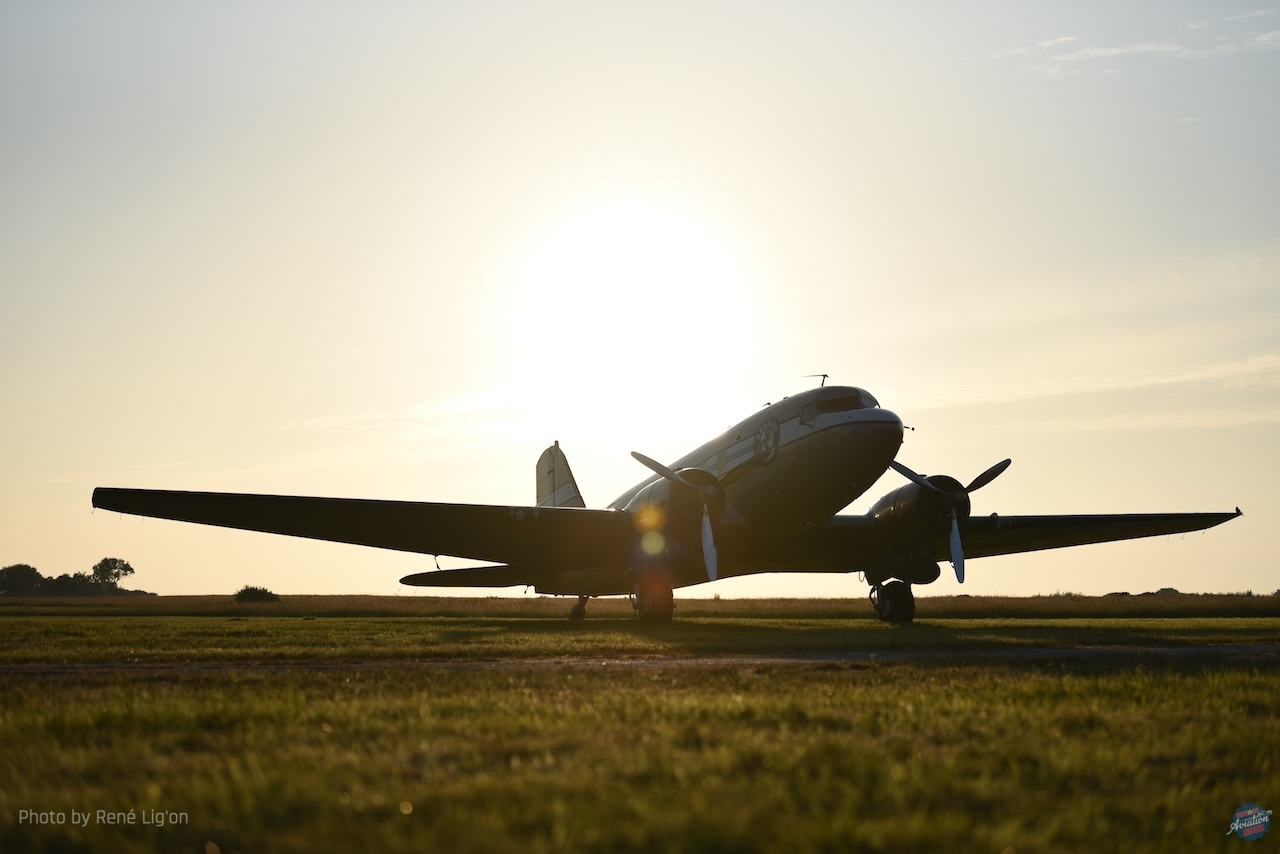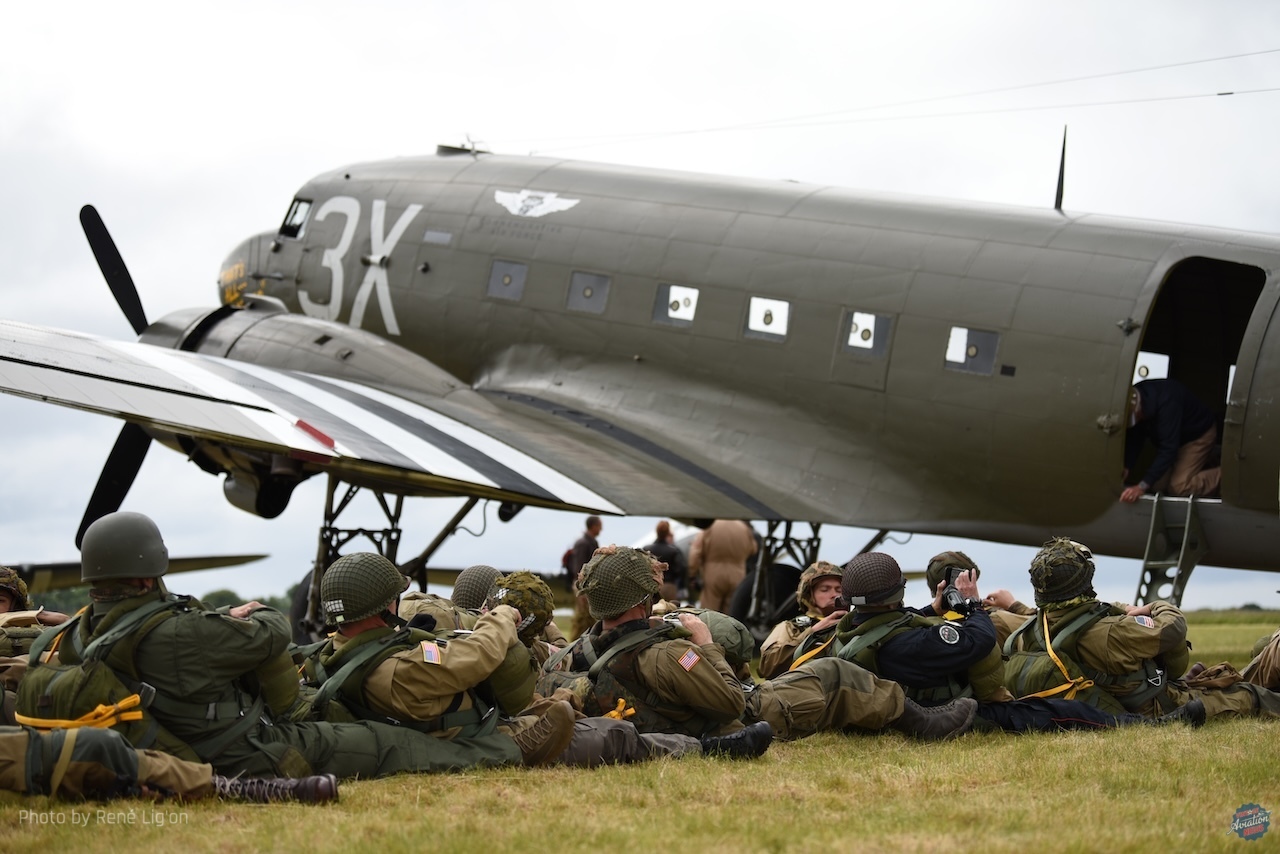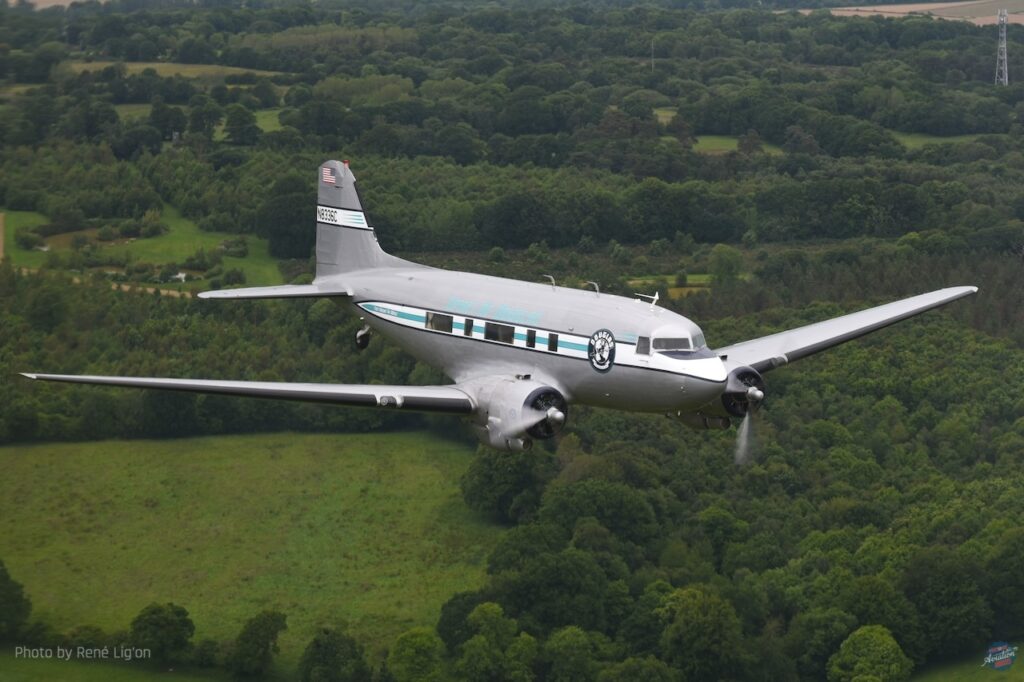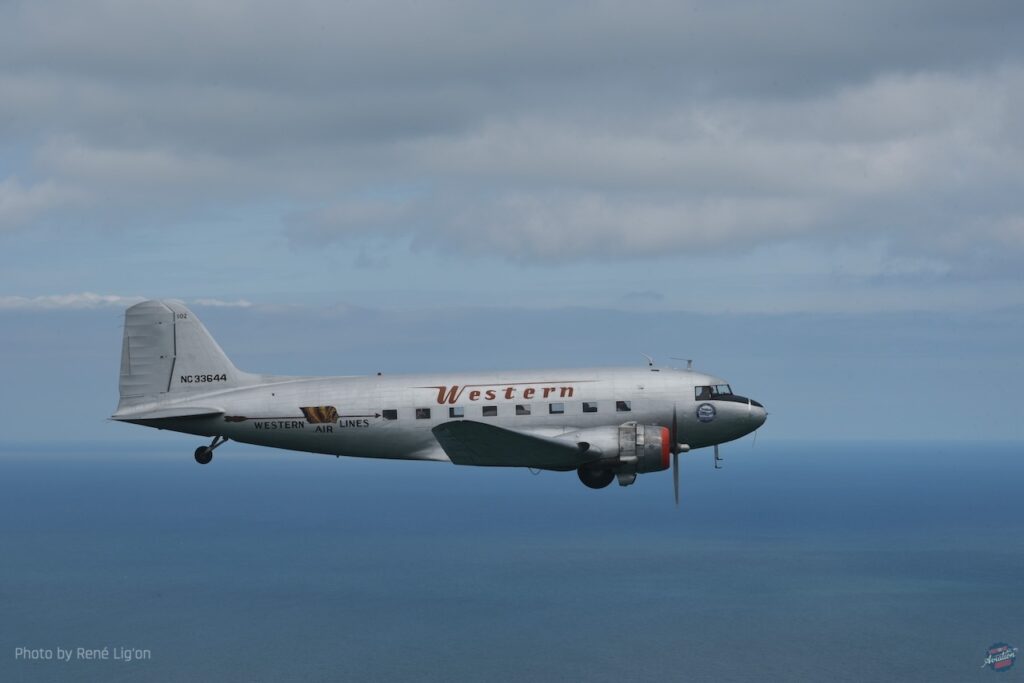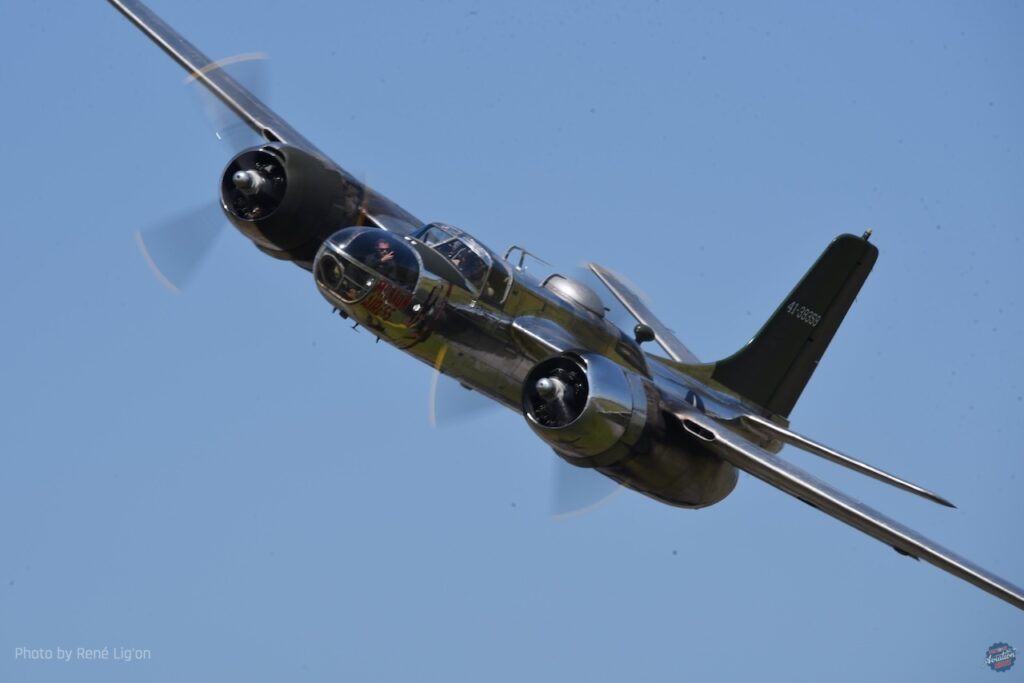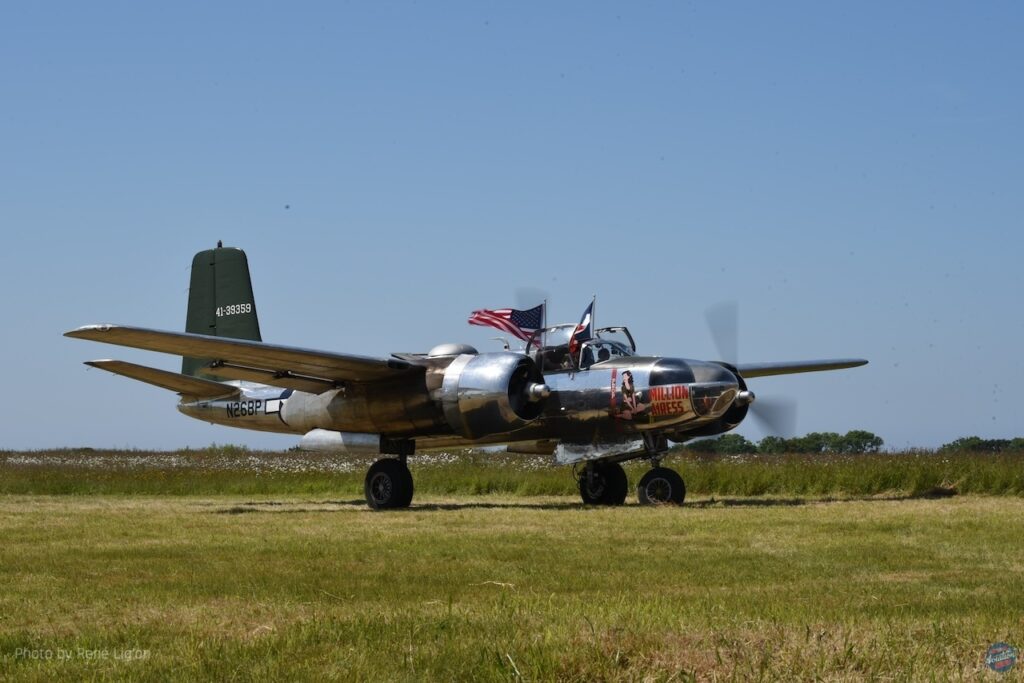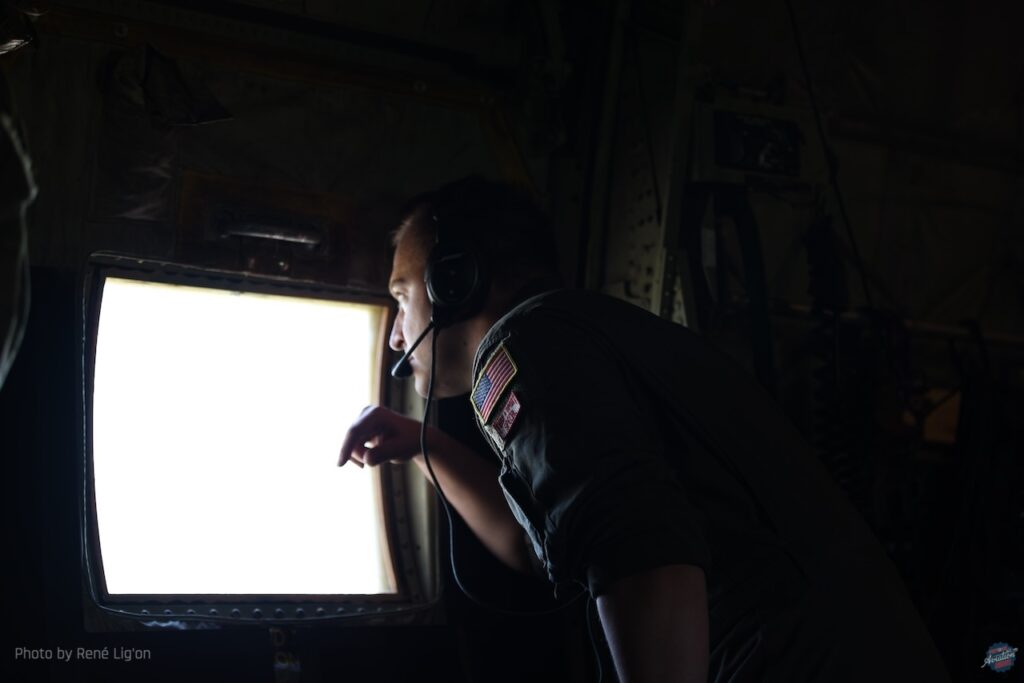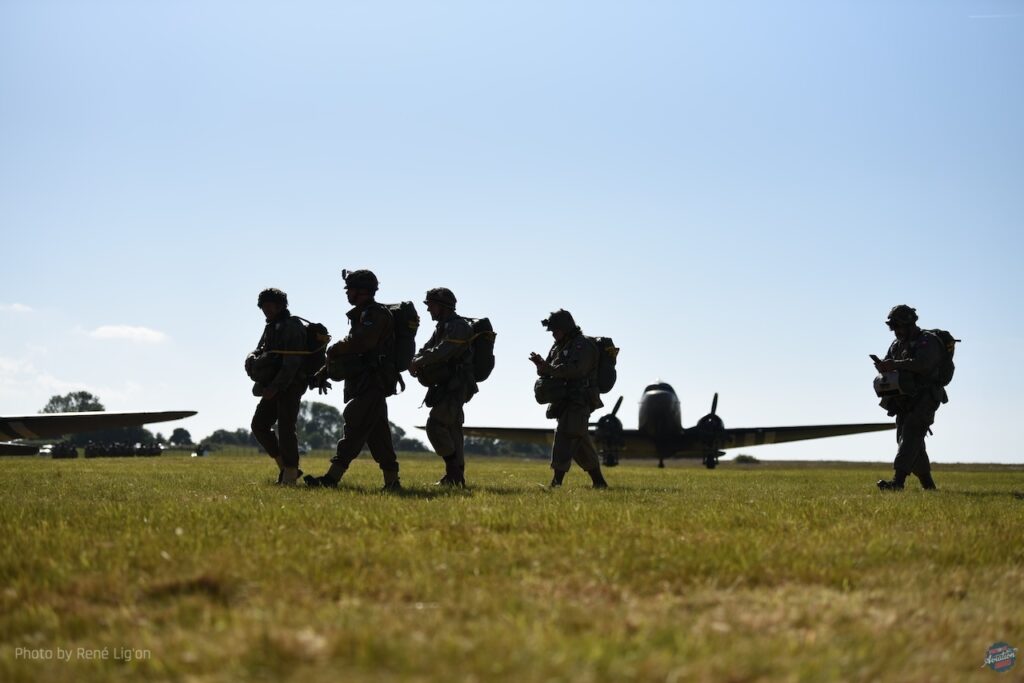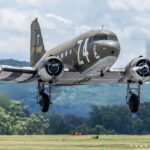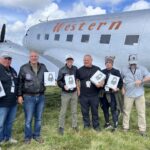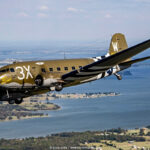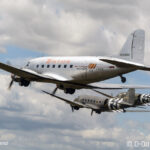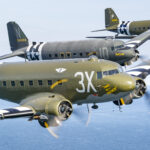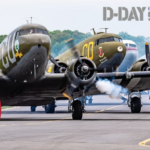By René Lig’on
As a European aviation photographer, witnessing the D-Day 80th Celebrations and warbirds in flight is a rare and exhilarating experience. While there are several World War II-era warbirds on the continent, including P-51s and Corsairs, vintage multi-engine aircraft are much scarcer. The opportunity to see multiple DC-3s — my favorite aircraft — flying together is worth a thousand-mile journey. The chance to photograph them, fly in them, and connect with passionate enthusiasts from the U.S. and Europe is invaluable. Whether it’s smartphone photographers behind the fence or the pilots themselves, shared love and appreciation for the DC-3s and the immense effort to bring them together creates an atmosphere reminiscent of a rare extended family gathering. The historic aviation community is a small niche, and I was amazed by the number of familiar faces from the Reno Air Races involved with the D-Day Squadron or simply present. Ultimately, this warm welcome and shared passion define the experience for me.
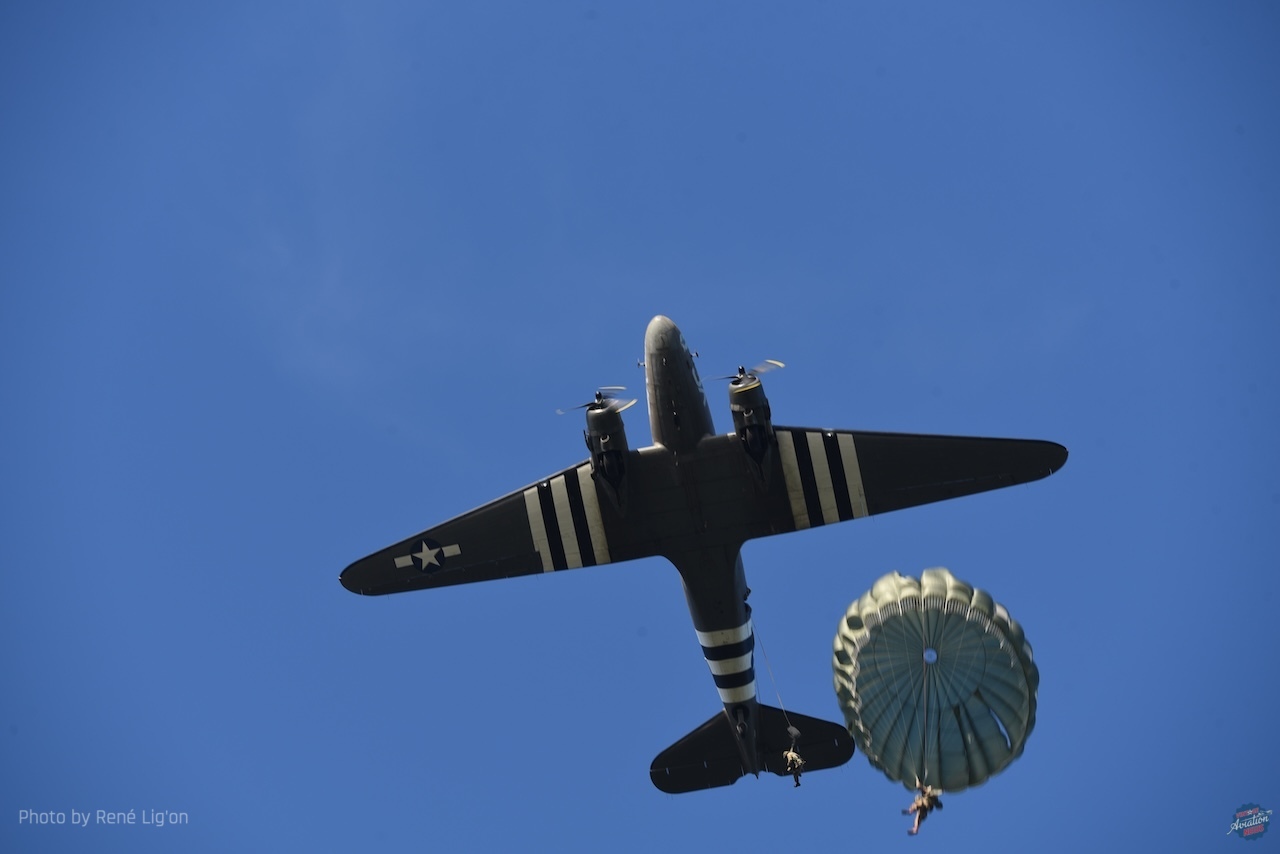
If you have never been to France, D-Day 80th Celebrations seem as good a time as any. At least for an aviation geek, as during the first week of June, Normandy was host to an aviation spectacle that has become a rare sight on our continent: a flock of DC-3s and C-47s, some of which have crossed the Atlantic to tour the Old World for the 80th anniversary of D-Day.
The DC-3 and its Long Life 80 years earlier, on June 6th, 1944, 150,000 Allied soldiers stormed five French beaches whose names would become legendary, symbolic of the beginning of the end for the Third Reich. They were preceded by paratroopers, carried into action by 800 Douglas C-47 Dakotas or Skytrains. Donald Douglas’ stroke of genius, the DC-3, was by that time itself already nine years old but bound to remain relevant in commercial and even military roles for many more decades. It served well into the 21st century, becoming one of the longest-lived modes of transportation mankind has produced, its silhouette linked to history by that fateful day in June.
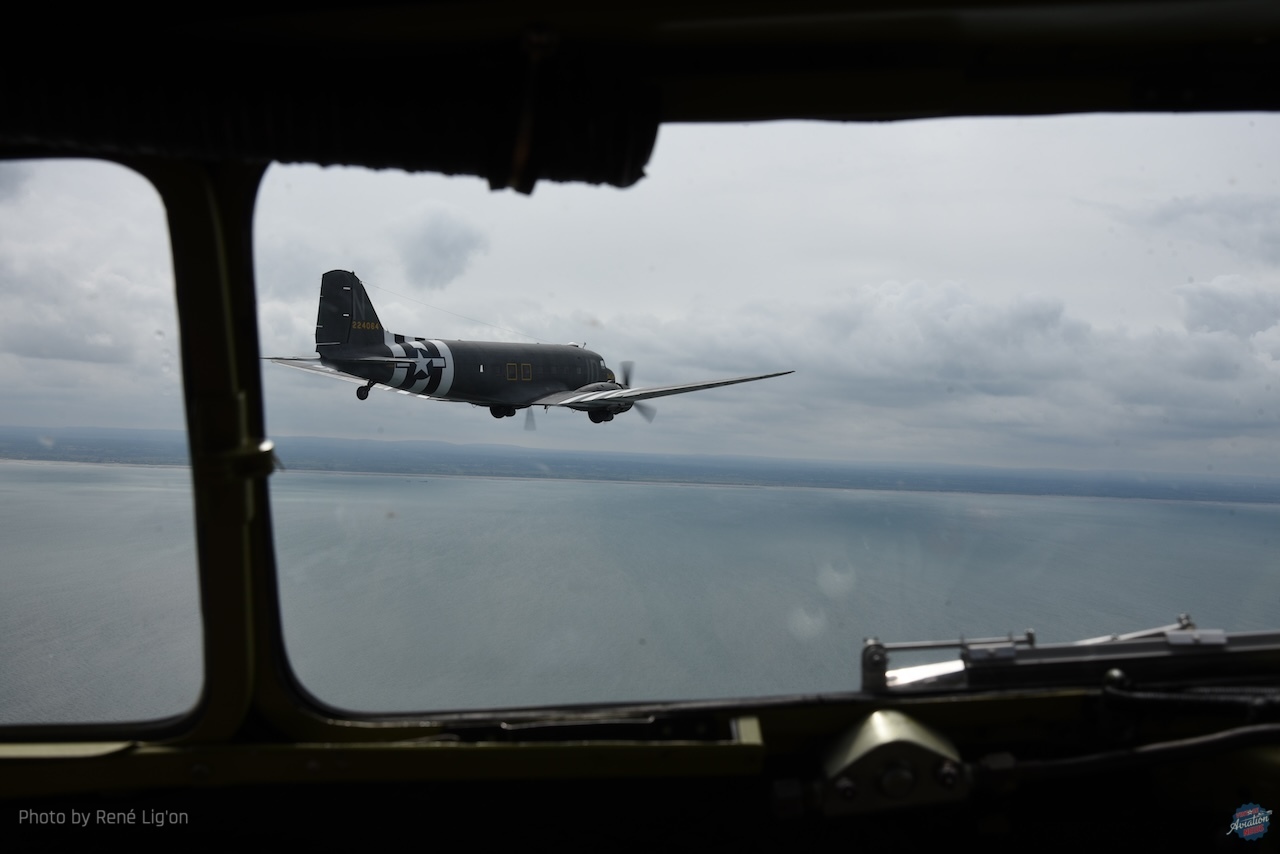
In Europe though, it is a rare bird. The continent has not seen a similar number of DC-3s since the huge 75th anniversary in 2019 as the total of airworthy European examples sits slightly above 10. For the 80th anniversary of D-Day this year, nine DC-3s made their way to Normandy throughout the week, with five aircraft coming over from the US to meet up with their European brethren: the Commemorative Air Force Central Texas Wing’s 42-92847/N47TB That’s all Brother, the Tunison Foundation’s 42-24064/N74589 Placid Lassie, 42-47371/N8336C Spirit of Douglas, Tim Savage’s Western Airlines-marked NC33644 and a rare Douglas A-26C Invader, 41-39359/N26BP Million Airess.
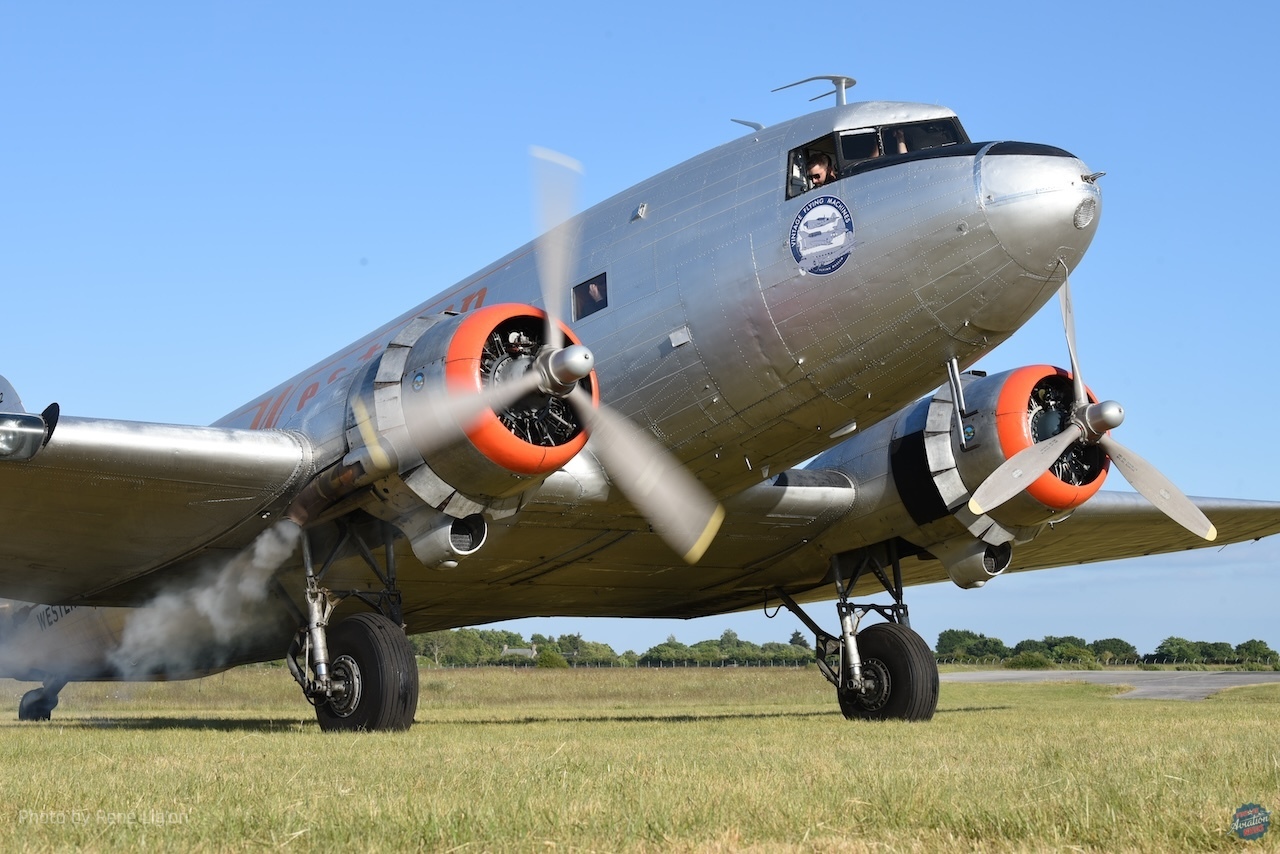
The task of operating these legendary workhorses is becoming increasingly difficult and the supply of spare parts is relying on wartime new-old stock. Even the youngest DC-3s are approaching their 80th year – the older ones will soon reach their 90th. Against this background, the effort of an Atlantic crossing must be considered, both from a monetary point of view and the sheer amount of time volunteers had to invest. Preparations began many months in advance for most of the participants and included mechanical preparation of the aircraft, the logistics, and the necessary paperwork.
Transatlantic Crossing What does it take to bring WWII-era aircraft over the Atlantic? A struggle that may best be described by one particular story, the momentous task of bringing an A-26 over that hasn’t flown in years. The opportunity to finally buy the A-26 he had helped care for led its new owner into an epic thrash, having to cram work that could well have taken months into 3 weeks. This extensive overhaul, and replacement of hydraulic systems, magnetos, wiring, and much more necessitated a three-shift system in which the airplane was literally worked on 24/7 in the weeks before departure.
A particular challenge was the avionics required for a safe crossing. Most recently, the A-26 had only flown locally and in good VFR weather. Hours over water required more sophisticated navigational help and communications. Leading experts, some especially flown in for an evaluation, were able to quote four weeks at best – far too long. In the end, it was someone from their own team who managed the impossible and led the installation of new radios and a Garmin glass cockpit in just 5 days! Leonel Turcios, a young avionics engineer originally from Honduras, thus saved the dream of bringing the A-26 over to Europe. A great example of the talent and dedication necessary to bring these historic machines over the Atlantic.
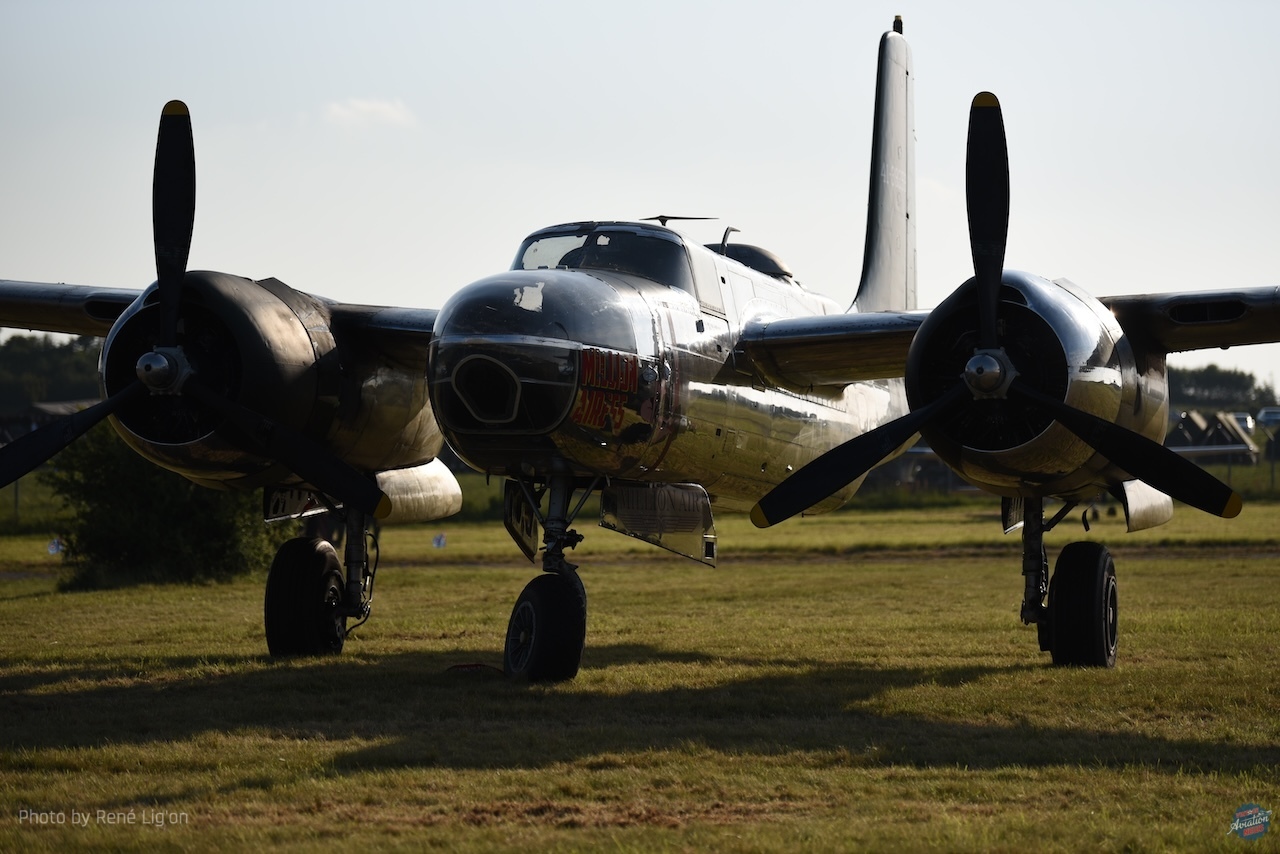
Arriving in Scotland then felt like a huge success – but it was only the beginning. Once in Europe, a tight schedule of air shows, photo flights, parachute jumps, and more in six countries began, cumulating in formation fly-bys for the big ceremonies at Omaha Beach and the celebrations for the 75th anniversary of the Berlin Airlift. A demanding operational tempo followed by the equally challenging return flights at the end of June saw each aircraft amass between 50 and 150 flight hours – the multiple of what many museum aircraft do over a whole year.
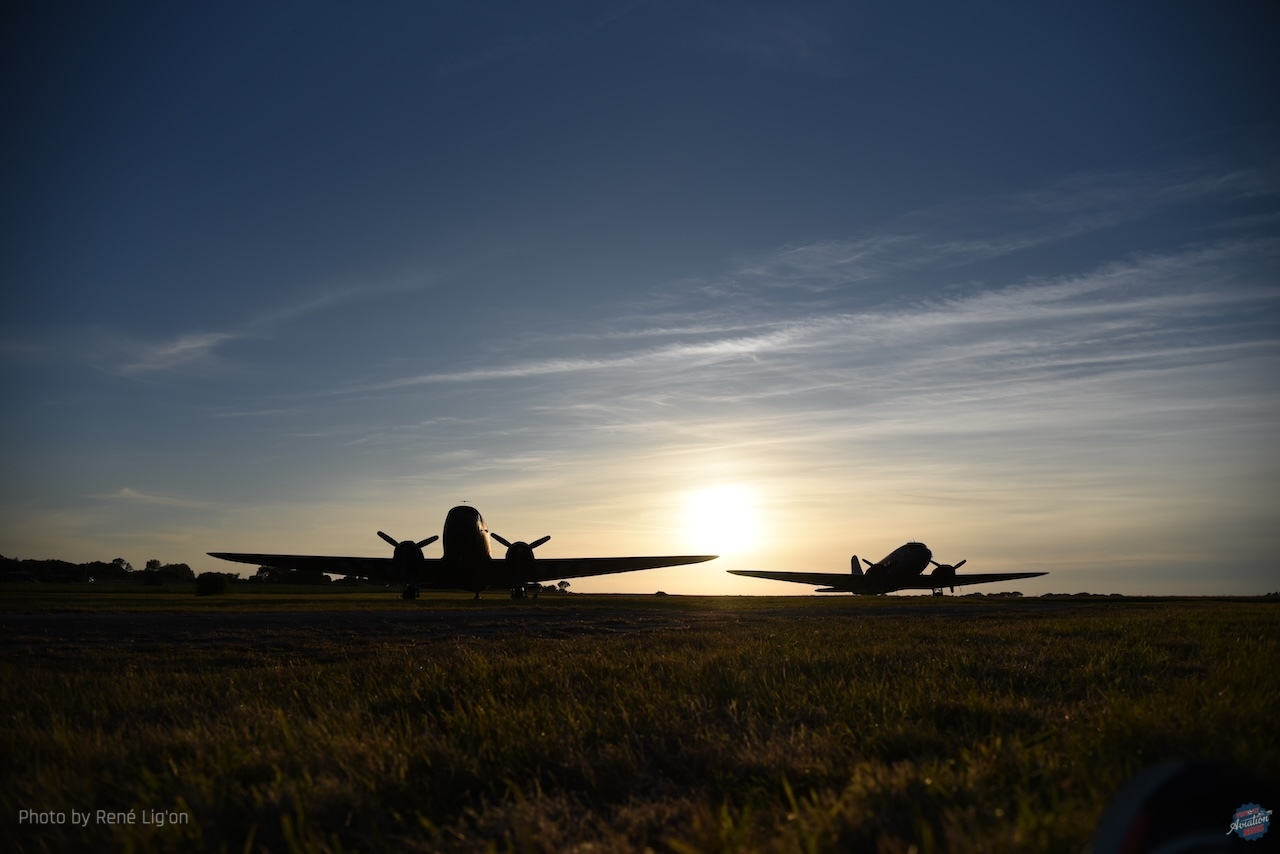
Experiences in France For D-Day Squadron Chief Pilot Eric Zipkin it was a wonderful experience to do all this with his son Luc, despite the challenging organization. Seemingly every small town wanted a parachute jump or at least a flyover – a scheduling nightmare given the dependence on weather and winds for the parachute jumps. The frequent airspace closures for dignitaries and government officials also impacted scheduling and coordination with all organizations involved: UK-based Aero Legends who brought over their C-47s and Spitfires, and Fly-a-Spitfire with their respective fighters.
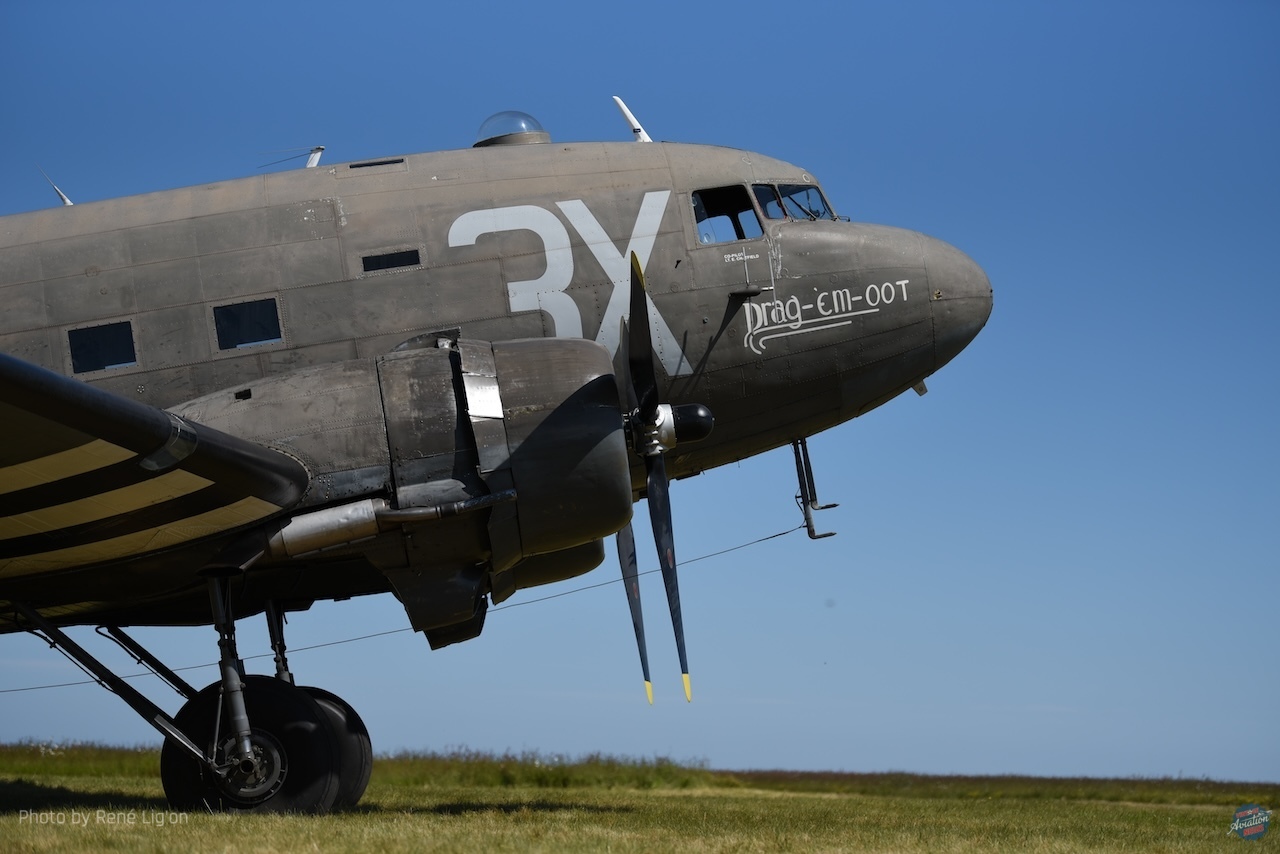
The biggest player at Cherbourg airport, however, was the U.S. Air Force. A contingent of 10 to 20 Lockheed Martin C-130 Hercules transports was present throughout the week, supplemented by many of their European counterparts as well as Canadian Hercs, performing countless paratrooper drops for the festivities, an opportunity that was also used to train together with the other NATO militaries.
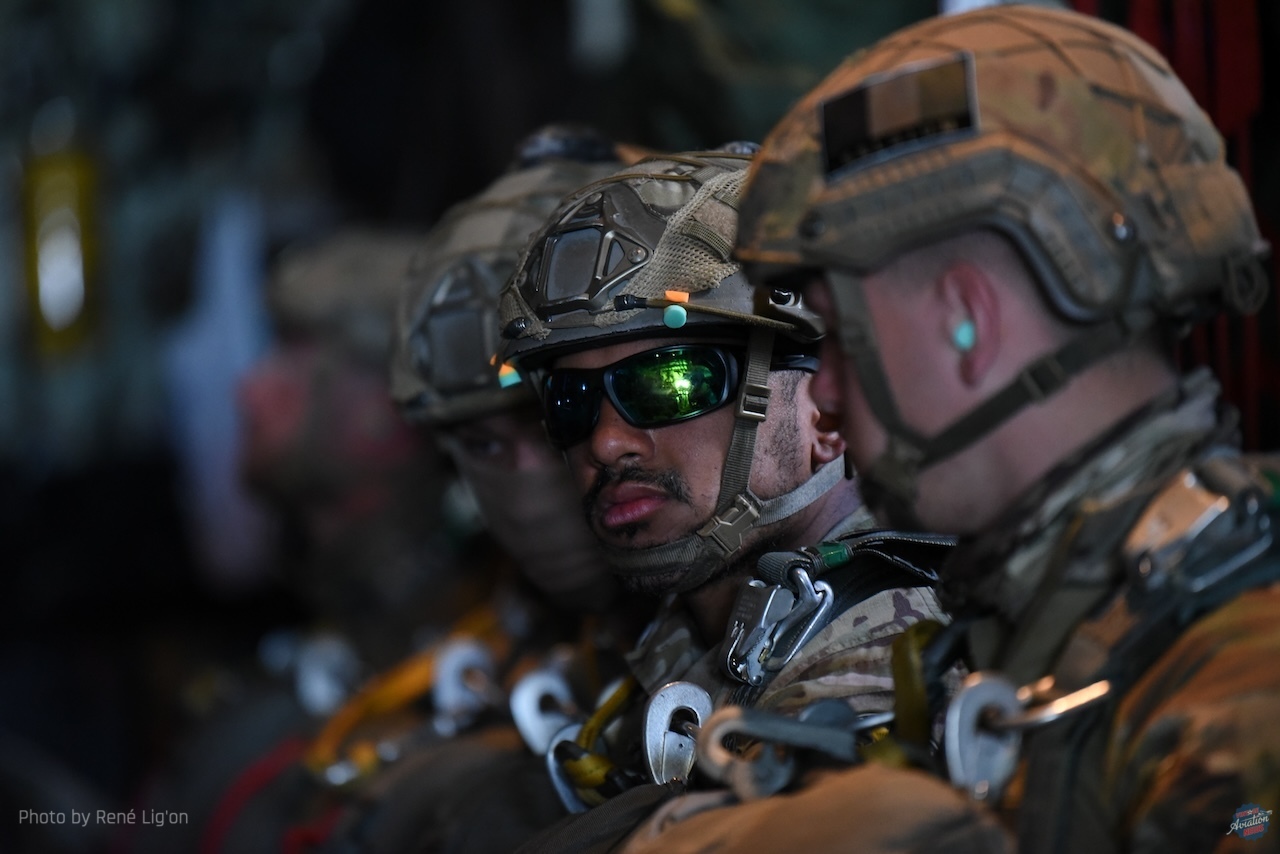
The center stage, however, belonged to the old warbirds. One of the pilots summed it up: “My favorite thing about this trip is people’s reactions to the DC-3. I’ve been flying airplanes for 50 years and no other plane has that reaction.” A passion clear to see wherever the planes went, with people crowding against airport fences from morning till evening. The level of spoken English was generally very low in France, but that didn’t keep spectators from expressing their love for the elegant airplanes with gestures.
Among the aircrew, another sentiment was noticeable – a strong sense of the deeper meaning behind the celebrations, making it more than just an adventure. This became particularly clear on the last evening in Cherbourg when veterans boarded for a formation flight. Reportedly not an eye stayed dry when an almost 100-year-old pilot who flew C-47s in the war was allowed to take the controls and briefly fly again himself. For so many, the whole effort was worth it at that moment.
